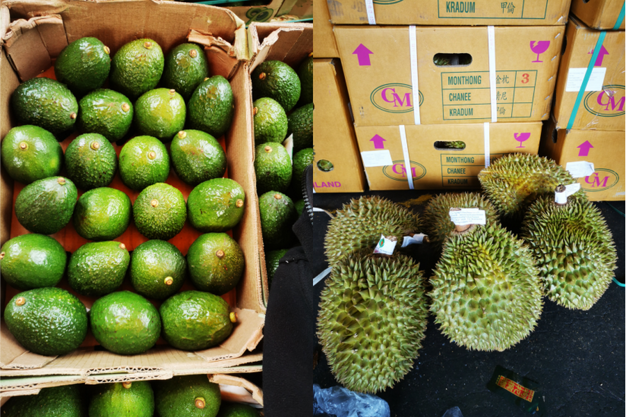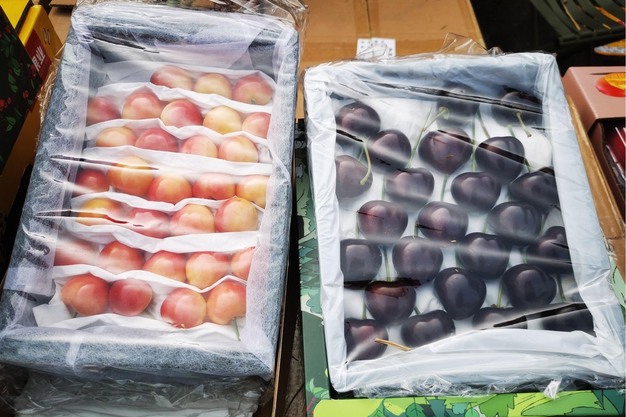Among the imported fruits currently on the market, U.S. produce mainly includes oranges and apples. According to traders, prices for these fruits have not yet shown a significant increase due to tariffs. However, the price of U.S. oranges has risen in recent days due to reduced arrivals. Some batches have increased from over US$55 per box to more than US$69. Traders noted that the price hike is primarily the result of lower recent arrivals, and tariff-related impacts have not yet been reflected. With a long U.S. orange season ahead, it remains uncertain how prices will change in the coming months. Some traders have already begun stocking up in anticipation.

Left: American and New Zealand apples; Right: American oranges
The price of American apples remains relatively stable. Traders explained that while U.S. apples are already priced high, the current market for imported apples is not particularly strong. If prices were to rise further, consumers might not be receptive. Therefore, prices for the batches currently on sale have remained flat. Meanwhile, Sonya apples from New Zealand are also on the market. Due to the overall weak apple market and limited consumer purchasing power, their current price is lower than during the same period in previous years.

Left: Chilean Dinosaur Egg plums; Right: Chilean nectarines
As for Chilean stone fruits, the plum season is nearing its end, with daily arrivals decreasing and prices rising as a result. Currently, J-grade plums in plastic crates are selling for around US$37 per box, though some traders report that certain batches lack firmness. The price of Chilean nectarines remains relatively stable at approximately US$22 per box. Among the plum varieties, Sweet Mary is particularly popular for its excellent taste, though it comes at a higher price point.

Left: Peruvian avocados; Right: Thai durians
Domestic blueberry arrivals continue to increase, leading to a price drop of around US$1.38 per box compared with last week. Traders noted that the largest declines are seen in the 15 mm+ and 18 mm+ size categories due to high volumes, while 22 mm+ blueberries remain relatively stable in price thanks to limited supply and strong demand. The price drop has helped stimulate sales, and among current shipments, sweet-and-sour varieties are especially prominent.

Left: Beijing Honey Peach; Right: Lunwan oranges
The supply of durians has increased significantly, resulting in a price decline. Thai Monthong A3 durians dropped from approximately US$124–US$131 per box last week to around US$96–US$103 per box. Meanwhile, the supply of A6-grade durians, previously limited, has grown recently and is now selling at around US$151 per box. The main varieties currently on the market are Gradoomthong and Monthong.
The arrival volume of Peruvian avocados has also increased compared to mid-to-late March. As a result, prices have normalized, falling from a high of ¥150 per piece during the supply shortage to about ¥110 per piece currently.

Dalian cherries
More seasonal domestic fruits are entering the market, including Lunwan oranges, Dalian cherries, Hainan pineapples, Yunnan loquats, and Beijing Honey peaches. Traders selling Lunwan oranges reported that both price and quality are consistent with previous years, and well-flavored batches are selling well. Dalian cherry sellers also noted that prices are similar to last year's levels, with steady sales across different varieties.
